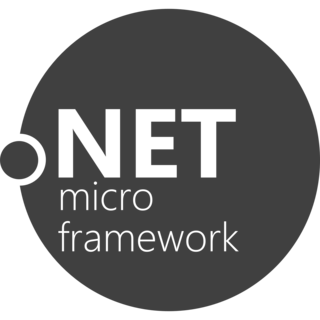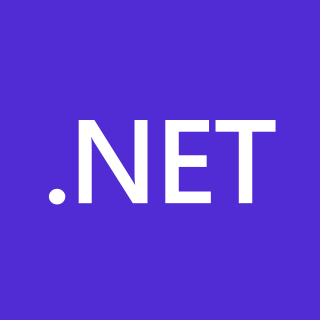| Original author(s) | Microsoft |
|---|---|
| Stable release | 4.5 / November 2012 |
| Repository | github |
| Written in | C#, C++ |
| Operating system | Microsoft Windows |
| Platform | .NET Framework, .NET Compact Framework |
| Type | Memory profiler |
| License | MIT License |
| Website | www |
CLR Profiler is a free and open-source memory profiler for the .NET Framework from Microsoft. It allows the user to investigate the contents of the managed heap, the behavior of the garbage collector, and the allocation patterns (including call-graph analysis) of the program being profiled.
The latest version, 4.5, released in November 2012, allows for profiling of .NET 2.0, 3.0, 3.5, 4.0 or 4.5 managed code as well as Silverlight apps. [1] The source code was originally included under the Microsoft Limited Reciprocal License (MS-LRL) and hosted on CodePlex. It is now available on GitHub under the MIT License. [2]
CLR Profiler is an intrusive tool; seeing a 10 to 100x slowdown in the application being profiled is not unusual. Therefore, it is not the right tool to find out where time is spent – use other profilers to profile the CPU usage of an application.
Windows Embedded Compact, formerly Windows Embedded CE, Windows Powered and Windows CE, is a discontinued operating system family developed by Microsoft as part of its Windows Embedded family of products.

Microsoft XNA is a freeware set of tools with a managed runtime environment that Microsoft developed to facilitate video game development. XNA is based on .NET Framework, with versions that run on Windows and Xbox 360. XNA Game Studio can help develop XNA games. The XNA toolset was announced on March 24, 2004, at the Game Developers Conference in San Jose, California. A first Community Technology Preview of XNA Build was released on March 14, 2006.
IronPython is an implementation of the Python programming language targeting the .NET Framework and Mono. The project is currently maintained by a group of volunteers at GitHub. It is free and open-source software, and can be implemented with Python Tools for Visual Studio, which is a free and open-source extension for Microsoft's Visual Studio IDE.

SharpDevelop is a discontinued free and open source integrated development environment (IDE) for the .NET Framework, Mono, Gtk# and Glade# platforms. It supports development in C#, Visual Basic .NET, Boo, F#, IronPython and IronRuby programming languages.

The .NET Micro Framework (NETMF) is a .NET Framework platform for resource-constrained devices with at least 512 kB of flash and 256 kB of random-access memory (RAM). It includes a small version of the .NET Common Language Runtime (CLR) and supports development in C#, Visual Basic .NET, and debugging using Microsoft Visual Studio. NETMF features a subset of the .NET base class libraries, an implementation of Windows Communication Foundation (WCF), a GUI framework loosely based on Windows Presentation Foundation (WPF), and a Web Services stack based on Simple Object Access Protocol (SOAP) and Web Services Description Language (WSDL). NETMF also features added libraries specific to embedded applications. It is free and open-source software released under Apache License 2.0.
IronRuby is an implementation of the Ruby programming language targeting Microsoft .NET Framework. It is implemented on top of the Dynamic Language Runtime (DLR), a library running on top of the Common Language Infrastructure that provides dynamic typing and dynamic method dispatch, among other things, for dynamic languages.
Visual Studio is an integrated development environment (IDE) from Microsoft. It is used to develop computer programs including websites, web apps, web services and mobile apps. Visual Studio uses Microsoft software development platforms such as Windows API, Windows Forms, Windows Presentation Foundation, Windows Store and Microsoft Silverlight. It can produce both native code and managed code.
Family.Show is a free and open-source genealogy program written in C# and running on the .NET Framework. Microsoft partnered with and commissioned Vertigo Software in 2006 to create it as a reference application for Microsoft's latest UI technology and software deployment mechanism at the time, Windows Presentation Foundation and ClickOnce. The source code has originally been published on Microsoft's CodePlex website. It has since been forked and development continues independent of Microsoft on GitHub.

The .NET Framework is a proprietary software framework developed by Microsoft that runs primarily on Microsoft Windows. It was the predominant implementation of the Common Language Infrastructure (CLI) until being superseded by the cross-platform .NET project. It includes a large class library called Framework Class Library (FCL) and provides language interoperability across several programming languages. Programs written for .NET Framework execute in a software environment named the Common Language Runtime (CLR). The CLR is an application virtual machine that provides services such as security, memory management, and exception handling. As such, computer code written using .NET Framework is called "managed code". FCL and CLR together constitute the .NET Framework.

Microsoft started development on the .NET Framework in the late 1990s originally under the name of Next Generation Windows Services (NGWS). By late 2001 the first beta versions of .NET Framework 1.0 were released. The first version of .NET Framework was released on 13 February 2002, bringing managed code to Windows NT 4.0, 98, 2000, ME and XP.

PyCharm is an integrated development environment (IDE) used for programming in Python. It provides code analysis, a graphical debugger, an integrated unit tester, integration with version control systems, and supports web development with Django. PyCharm is developed by the Czech company JetBrains.

Mono is a free and open-source .NET Framework-compatible software framework. Originally by Ximian, it was later acquired by Novell, and is now being led by Xamarin, a subsidiary of Microsoft and the .NET Foundation. Mono can be run on many software systems.

The Windows Library for JavaScript is an open-source JavaScript library developed by Microsoft. It has been designed with the primary goal of easing development of Windows Store apps for Windows 8 and Windows 10, as well as Windows Phone apps for Windows Phone 8.1, Windows 10 Mobile and Xbox One applications using HTML5 and JavaScript, as an alternative to using WinRT XAML and C#, VB.NET or C++ (CX).
ASP.NET Core is an open-source modular web-application framework. It is a redesign of ASP.NET that unites the previously separate ASP.NET MVC and ASP.NET Web API into a single programming model. Despite being a new framework, built on a new web stack, it does have a high degree of concept compatibility with ASP.NET. The ASP.NET Core framework supports side-by-side versioning so that different applications being developed on a single machine can target different versions of ASP.NET Core. This was not possible with previous versions of ASP.NET. ASP.NET Core initially ran on both the Windows-only .NET Framework and the cross-platform .NET. However, support for the .NET Framework was dropped beginning with ASP.Net Core 3.0.

The .NET platform is a free and open-source, managed computer software framework for Windows, Linux, and macOS operating systems. The project is mainly developed by Microsoft employees by way of the .NET Foundation and is released under an MIT License.
Microsoft, a technology company historically known for its opposition to the open source software paradigm, turned to embrace the approach in the 2010s. From the 1970s through 2000s under CEOs Bill Gates and Steve Ballmer, Microsoft viewed the community creation and sharing of communal code, later to be known as free and open source software, as a threat to its business, and both executives spoke negatively against it. In the 2010s, as the industry turned towards cloud, embedded, and mobile computing—technologies powered by open source advances—CEO Satya Nadella led Microsoft towards open source adoption although Microsoft's traditional Windows business continued to grow throughout this period generating revenues of 26.8 billion in the third quarter of 2018, while Microsoft's Azure cloud revenues nearly doubled.

Windows Terminal is a multi-tabbed terminal emulator developed by Microsoft for Windows 10 and later as a replacement for Windows Console. It can run any command-line app in a separate tab. It is preconfigured to run Command Prompt, PowerShell, WSL, SSH, and Azure Cloud Shell Connector. Windows Terminal comes with its own rendering back-end; starting with version 1.11 on Windows 11, command-line apps can run using this newer back-end instead of the old Windows Console.
VoTT is a free and open source electron app for image annotation and labeling developed by Microsoft. The software is written in the TypeScript programming language and used for building end to end object detection models from image and videos assets for computer vision algorithms.